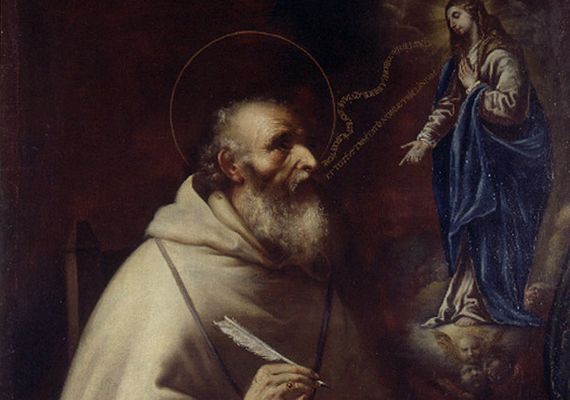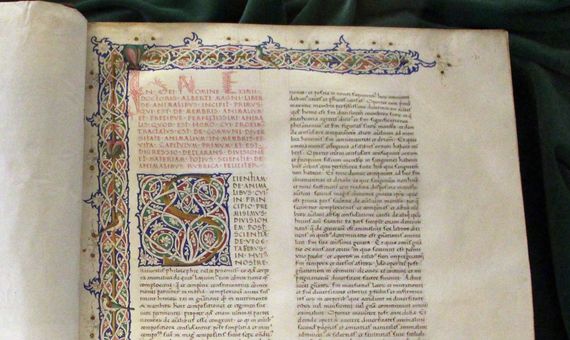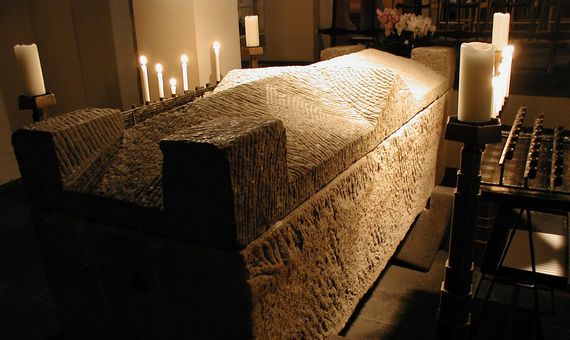Because the relationship between science and religion has not always been smooth, these two fields are often thought of as disjunct, even at odds with each other. And yet, there is no shortage of examples of historical figures who have combined both vocations, especially in times when the boundaries between science and faith were blurred and the Church was a gateway to the most complete and advanced academic knowledge of the time. A few of them have earned the highest religious honours, being canonised and incorporated into the Christian calendar of saints. Among them is the figure of Saint Albert the Great, raised to the altars by Pope Pius XI on 16 December 1931, whose feast day is celebrated on 15 November and whose scientific contribution in times that can be considered the prehistory of science earned him the title of patron saint of natural scientists.

Little is known with certainty about the early biography of the man who has gone down in history only by his first name, Albert or Albertus, accompanied by the moniker Magnus or the Great, which he received in his later years. The year 1193 is often cited as his birth year, although all that can be said is that he was born before 1200, probably in Lauingen, now in the German region of Bavaria. He studied in Padua and Bologna, and the story of his life recounts that it was an apparition of the Virgin Mary that induced him to enter the Dominican order, which led him to teach in various places.
An influencer in bringing science to the Church
In Paris he met the man who would become his most famous student, and fellow future saint, Thomas Aquinas. From 1248 he was assigned to Cologne, the city with which his name is associated and where he spent the rest of his life, serving as bishop of Regensburg for three years until he resigned from office. Following the rule of his order, he led an austere life, refusing to journey on horseback and travelling around his diocese on foot. He died in Cologne on 15 November 1280, after a life in which he combined theology and religious work with an encyclopaedic curiosity for science.
As an overview of his thought and work, his most important contributions can be summarised along two closely related lines. On the one hand, he was a great supporter of Aristotle, to the extent that a large part of the Greek thinker’s doctrine has come down to us thanks to him. Curiously, and although today we know the scientific philosophy of the Catholic Church as traditionally Aristotelian, this was not the case before St Albert the Great; in fact, at that time, Aristotle’s texts were even banned by Catholic institutions.

Secondly, by convincing his contemporaries that the classical philosopher’s thought explained the world in a way that was compatible with Christian doctrine, he did something else: as Nature magazine reported in 1932 on the occasion of the canonisation, “Albert the Great broke the chains that kept natural science in the hands of unbelievers.” Thus, it can be said that his role was crucial in opening the Church to science, which then amounted to bringing science into society. He was, in today’s terms, a great influencer of his time, which led to his name being immortalised in the pages of Dante’s Divine Comedy, an honour reserved for few.
Through Aristotle, Albert was introduced to the broadest spectrum of the natural sciences, which he began to compile in his writings: astronomy, geography, physics, chemistry, mechanics, optics, mineralogy, zoology, botany, anthropology, physiology and medicine, in addition to his work in other areas such as theology, mathematics, metaphysics, music, architecture, law and even love and friendship. He discussed the structure of the universe and matter, the movement of the stars and bodies, the functioning of light and heat, classified a hundred minerals and many plant species, carried out meticulous work as a naturalist and gathered knowledge on the therapeutic properties of plants, among many other endeavours. His works today occupy 38 thick volumes that cover practically all the knowledge of his time.
Founder and patron of chemistry
His work on alchemy deserves special mention, as the science of chemistry has him as one of its founding fathers. However, many of the works on alchemy that were once attributed to him were later discovered to belong to other authors. Legend even attributes to him the discovery of the philosopher’s stone—capable of turning metals into gold—which he is said to have given to his pupil Thomas Aquinas. The truth is that modern scholars question whether he actually carried out extensive alchemical experiments, and instead restrict his contributions to the subject to his commentaries on Aristotle. However, to his credit remain the discovery of the element arsenic and the photosensitive capacity of silver nitrate, which centuries later gave rise to photography.
But of course, if Aristotle was wrong in many aspects of his interpretation of nature, so was Albert. His geocentric cosmology of nested spheres was all wrong, the influence of the stars on people and the properties of stones that he believed in don’t exist, his observations about plants and their mode of reproduction were confused and incorrect, unicorns do not exist…. It is true that there is no singular, unique and significant contribution that grants Saint Albert the Great a particular niche in the chronological history of scientific breakthroughs; sometimes his figure is surrounded by legends, such as the one that also attributes to him the construction of an automaton capable of moving and speaking, which so horrified his pupil Thomas that he supposedly smashed it to pieces.

However, his verified work was not limited to that of a learned encyclopaedist; he also undertook his own research, which led him down the path of numerous small advances, such as the first observation of organs in embryos, the systematisation of minerals or the idea that the speed of light was finite. In short, the status of St. Albert as a great scientific discoverer may be disputed, but not his vocation as a man of science. Such was his thirst for knowledge that Pius XI wrote of him: “Everything there was to be known, he knew.” It has been said that he was the last man who knew everything, and his title of Doctor Universalis—he is one of the 36 Doctors of the Church—perfectly reflects his status.
But one consistent characteristic of scientists has always been how their discoveries raise new questions that prompt further research, and this quality was very much present in Albert the Great. Perhaps the greatest debt of gratitude that science owes him is for having acted as a champion of knowledge in a scientifically stagnant age, the Middle Ages, when practically everything was still unknown. As a patron of science at a time when its necessity was not yet well understood, he richly deserves the patronage accorded to him, which can be summed up in a phrase that may seem elementary today but which for the 13th century was enormously daring, even subversive: “Science does not consist simply in believing what we are told, but in inquiring into the nature of things.”
Javier Yanes
Comments on this publication